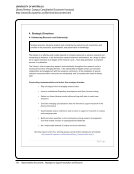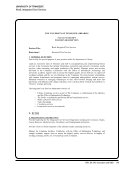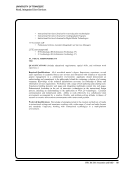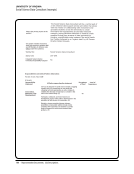128 · Representative Documents: Strategies to Support Innovation and Research
VIRGINIA TECH
New Learning Initiative
https://docs.google.com/a/arl.org/file/d/0B0fU_B0HbCf_V3lReHdzQTNLRkU/edit?usp=sharing
Prospectus 8.24.2012 v3
2
THE RANGE OF NEW LEARNING ENDEAVORS
The following nine frameworks represent the spectrum of themes and possibilities that the New
Learning Initiative will explore. Members contribute to areas of interest, and are also aligned
with projects closely associated with their skill set, connections, or knowledge base.
#1 DESIGNING LEARNING ENVIRONMENTS
• Objective: help build spaces that propel learning.
• Scope: provide vision and design support for learning spaces within the University
Libraries and across Virginia Tech.
#2 PROMOTING NEW LITERACIES
• Objective: help develop students’ skills and abilities for digital and media-rich
expression.
• Scope: provide training, application, and support of various literacies including
visual, media, data, cultural, Internet, and others.
• Phase 1: develop internal proficiencies.
• Phase 2: develop network of partnerships.
• Phase 3: work to deliver “literacy packages” across the curriculum.
• Phase 4: enable a self-directed model.
#3 DEPLOYING EMERGING TECHNOLOGIES
• Objective: help the Virginia Tech community use technology to augment learning.
• Scope: provide training, application, and support for social and emerging
technologies related to learning and personal enrichment.
• Note 1: it is essential that we partner with Learning Technologies and others in order
for this to succeed. They help with scope, scale, and access.
• Note 2: a key opportunity is to embed the library within courses beyond a purely
“informational” role, but instead, as an active contributing member. Rebecca Miller
dabbled with this related to Twitter.
#4 SUPPORTING (NEW) LEARNING ENDEAVORS
• Objective: support new, active, or experimental pedagogical ventures
• Scope: provide training, application, and support of new or active learning endeavors
such as service learning, design thinking, problem-based learning, and flipped
instructional methods.
• Note 1: explore interdisciplinary mashups. This is combining two or more different
courses to work on a problem or assignment together. (Art &Engineering, Science &
Business)
VIRGINIA TECH
New Learning Initiative
https://docs.google.com/a/arl.org/file/d/0B0fU_B0HbCf_V3lReHdzQTNLRkU/edit?usp=sharing
Prospectus 8.24.2012 v3
2
THE RANGE OF NEW LEARNING ENDEAVORS
The following nine frameworks represent the spectrum of themes and possibilities that the New
Learning Initiative will explore. Members contribute to areas of interest, and are also aligned
with projects closely associated with their skill set, connections, or knowledge base.
#1 DESIGNING LEARNING ENVIRONMENTS
• Objective: help build spaces that propel learning.
• Scope: provide vision and design support for learning spaces within the University
Libraries and across Virginia Tech.
#2 PROMOTING NEW LITERACIES
• Objective: help develop students’ skills and abilities for digital and media-rich
expression.
• Scope: provide training, application, and support of various literacies including
visual, media, data, cultural, Internet, and others.
• Phase 1: develop internal proficiencies.
• Phase 2: develop network of partnerships.
• Phase 3: work to deliver “literacy packages” across the curriculum.
• Phase 4: enable a self-directed model.
#3 DEPLOYING EMERGING TECHNOLOGIES
• Objective: help the Virginia Tech community use technology to augment learning.
• Scope: provide training, application, and support for social and emerging
technologies related to learning and personal enrichment.
• Note 1: it is essential that we partner with Learning Technologies and others in order
for this to succeed. They help with scope, scale, and access.
• Note 2: a key opportunity is to embed the library within courses beyond a purely
“informational” role, but instead, as an active contributing member. Rebecca Miller
dabbled with this related to Twitter.
#4 SUPPORTING (NEW) LEARNING ENDEAVORS
• Objective: support new, active, or experimental pedagogical ventures
• Scope: provide training, application, and support of new or active learning endeavors
such as service learning, design thinking, problem-based learning, and flipped
instructional methods.
• Note 1: explore interdisciplinary mashups. This is combining two or more different
courses to work on a problem or assignment together. (Art &Engineering, Science &
Business)
































































































































































































